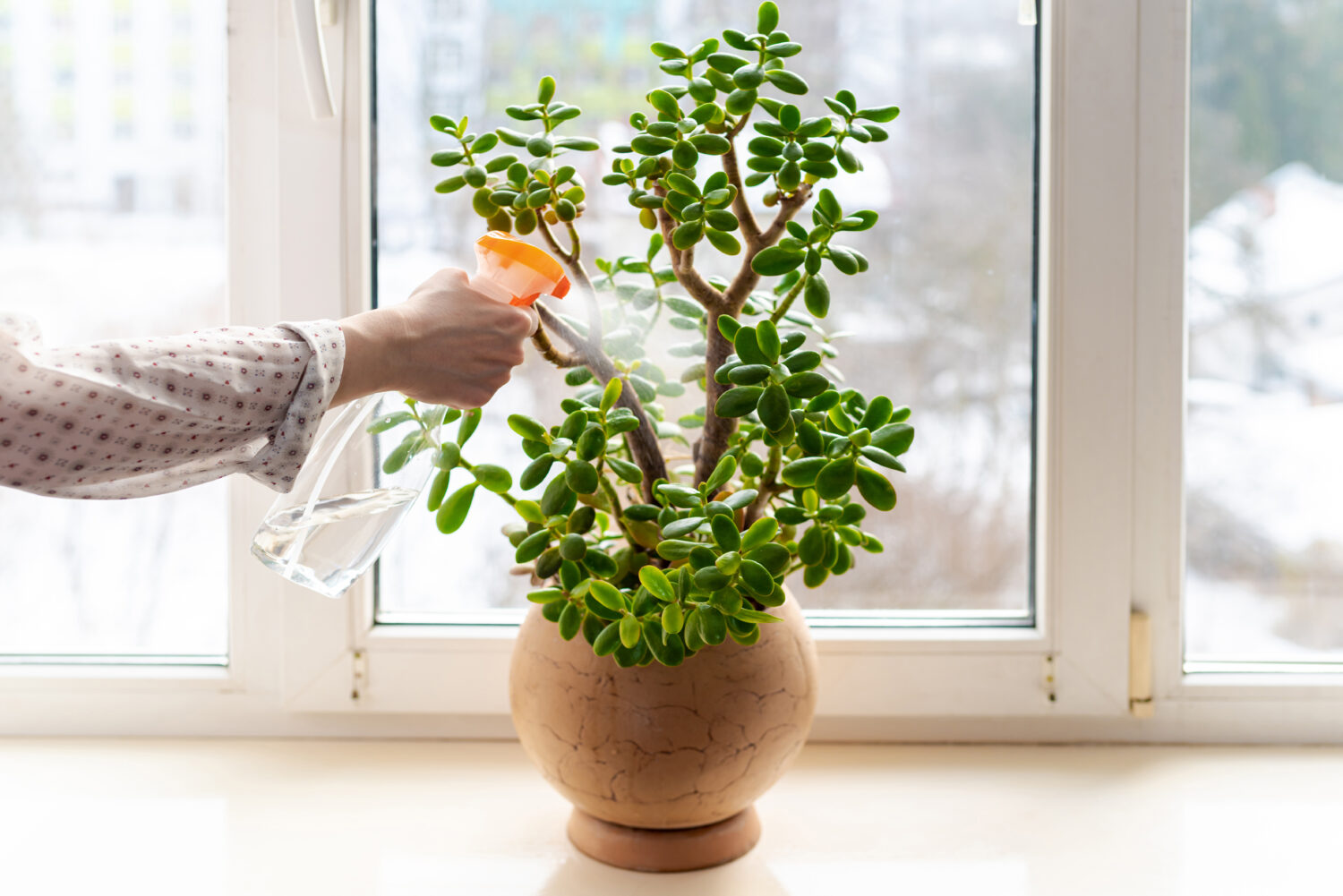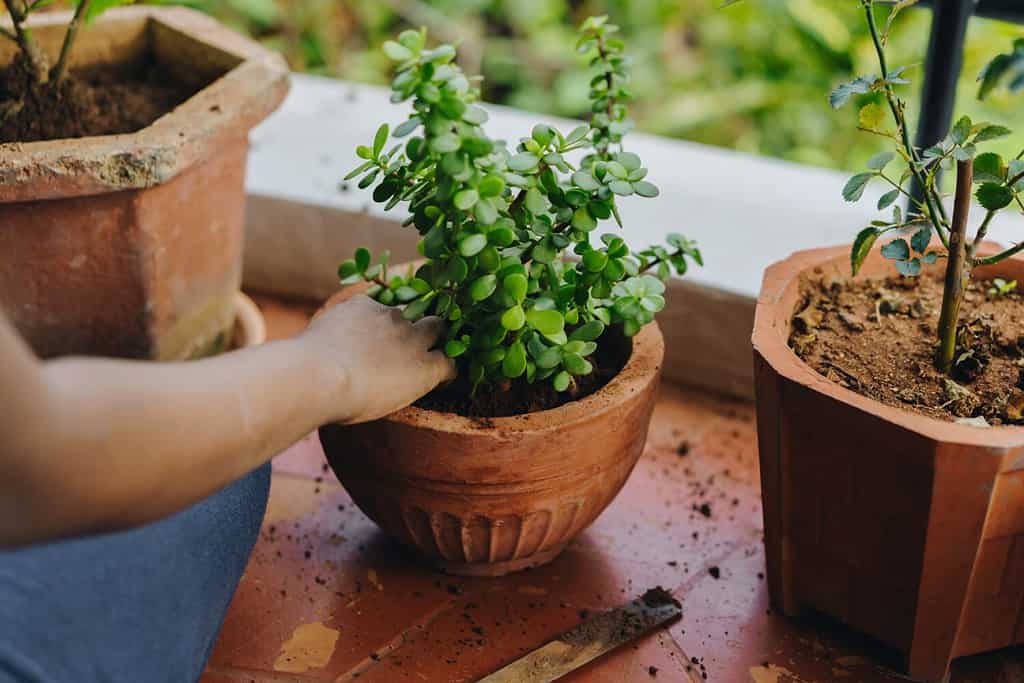Discover the Best Soil for Jade Plants: Top Mixes and 4 Critical Care Tips
Variations on Jade Potting Soil Mix
In addition to this basic recipe, there are also other variations that you can try out. Each varies slightly in terms of how much of each component is present.
One alternative recipe is:
- 1 part potting soil
- 1 part sand
- 1 part perlite
Another great option is:
- 2 parts potting soil
- 1 part perlite
- 1 part vermiculite
4 Critical Care Tips for Your Jade Plant
Now that we have discussed what jade plants are and what types of soil they thrive in, we can discuss some important tips that you should keep in mind when caring for them.
Be Diligent With Your Watering

©TSViPhoto/Shutterstock.com
One of the most important things to think of when you are caring for your jade plant is watering. Even if you set up your plant with the absolute best soil, it still will be sensitive to increased moisture conditions. Unlike most house plants, bottom-watering and other related techniques are not your best option, as they can oversaturate your plant’s soil.
Most sources agree that watering your jade plant whenever the top one or two inches of the soil is dry is the best way to keep them happy. This ensures that your plant likely isn’t too wet near the roots, and allows you to have a visual indication of when you should water!
Water Thoroughly
One common issue that people have with growing succulents is that they water their plants too frequently, or that their watering is not suited for the plant’s needs. In other words, watering your plant too much, or watering it in the incorrect amount are common mistakes.
Although it may sound counter-intuitive, it is often best to water your jade plant very deeply. Make sure that the majority of the soil. Assuming that your jade’s soil is well draining and that it is potted in a suitable container, watering thoroughly actually reduces the risk of it taking on unneeded water-related stress. Watering this way is especially important during the summertime, as increased heat can dry out your plant’s soil faster than usual.
Give Your Jade Plant Light

©Sahana M S/Shutterstock.com
Jade plants have a lot of various adaptions that work best in growing conditions that have a lot of light and heat. When they aren’t given enough light, they simply won’t succeed, even if they have enough nutrients or the perfect soil.
At a minimum, jade plants need at least 4-6 hours of direct sunlight a day. With that said, they usually aren’t upset if you give them even more. In fact, many find that increasing sunlight levels generally leads to improved growth.
When you are placing your jade plant, monitor it for a short time. Make sure that it is happy wherever you place it. If you find that it is not growing or starting to look damaged, you may want to move it somewhere else. Additionally, if you can’t find a great place that has 4-6 hours of direct natural light, you can also look into supplying it with artificial grow lights!
Consider Propagating Your Jade Plant
One last care tip is to have fun with your jade plant. They can be incredibly rewarding plants to grow, that yield gorgeous foliage that stays lustrous all year round.
Unfortunately, they are incredibly slow growers, which often prompts people to try out propagation. In case you aren’t familiar, propagation is the process of cloning a plant from a leaf or a cutting, and it can work surprisingly well with jade plants.
To propagate your jade plant, you can snap off a leaf and allow it to callous on a counter for a few days. Afterward, you can place the leaf with the cut side down over some dirt and wait for it to root. Additionally, you can also start a propagation from a cutting of the jade plant’s stems. Take note though, that jade plants’ propagations are incredibly slow-growing, so it may take some time and perseverance!









